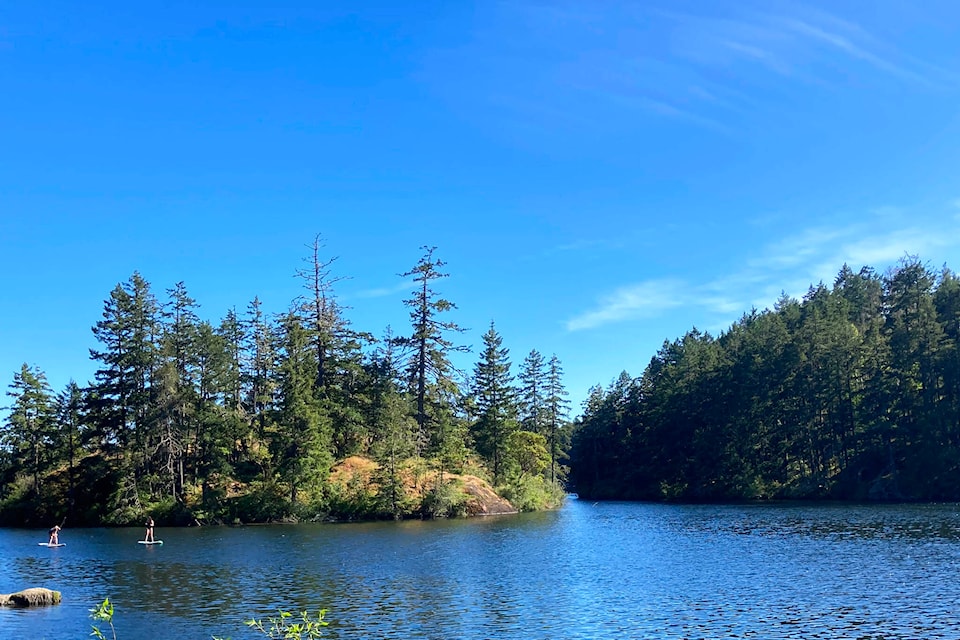Reports of cars and motorcycles resting on the floor of Thetis Lake have yet to be verified, according to the Capital Regional District.
And local urban legends about the lake being bottomless and reports of some scaly monster living in the depths have been thoroughly debunked.
Devon Smith, communications coordinator from the CRD said reports of the Thetis Lake monster were debunked after two college students in the 1970s admitted they got the idea from Creature from the Black Lagoon.
However, even without these sensational stories, the popular, nine-metre deep lake on the northern fringes of Greater Victoria offers plenty of note
In 1958, the lake became the first nature sanctuary in Canada, and the City of Victoria managed the park surrounding the lake before 1993. Afterward, Smith said it was transferred to the CRD.
Thetis Lake Regional Park is home to an array of native species, ranging from large carnivores like bears and cougars to the small and rare Blue-Grey Taildropper slug, which has been classified as endangered under the Species at Risk Act.
Climate change made its presence felt at Thetis Lake, with dryer, longer and hotter summers, meaning that water needs to be released into the lake to help protect summer fish that live in Craigflower Creek, which is part of the watershed that feeds the lake.
Sections of the lake did freeze during the cold snap on Dec. 22, but there is no record that the lake completely froze over.
Smith said that members of the public should take care to be safe on ice that might form on Thetis Lake and that lake or pond ice can be difficult to judge if it is thick enough to skate on.
A popular swimming hole, the lake has rocks, hidden cliff ledges and logs that might not be viewable from the surface and could pose a risk for people who like to engage in dangerous activities such as cliff jumping.
Thetis Lake has an estimated 500,000-plus visits per year, with more than 40 kilometres of trails and beaches for people to enjoy throughout the year, with visitor amenities such as flush toilets being open seasonally, said Smith.
With so many visitors entering the park, significant daily upkeep is necessary, especially during summer. This includes garbage removal, bylaw education and enforcement, cleaning bathrooms and beach areas, and trail maintenance.
A dam and spillway maintain lake levels for recreation and protect fish habitat during low summer flows. According to Smith, Island Health conducts its beach sampling program between mid-May and September at Thetis Lake Beach.
Visitors to the park are reminded to leave no trace behind when they visit the site and that illegal dumping and littering aren’t just against the law but also prove a considerable danger to the ecosystem, Smith said.
READ ALSO: New provincial park announced near Koksilah River
